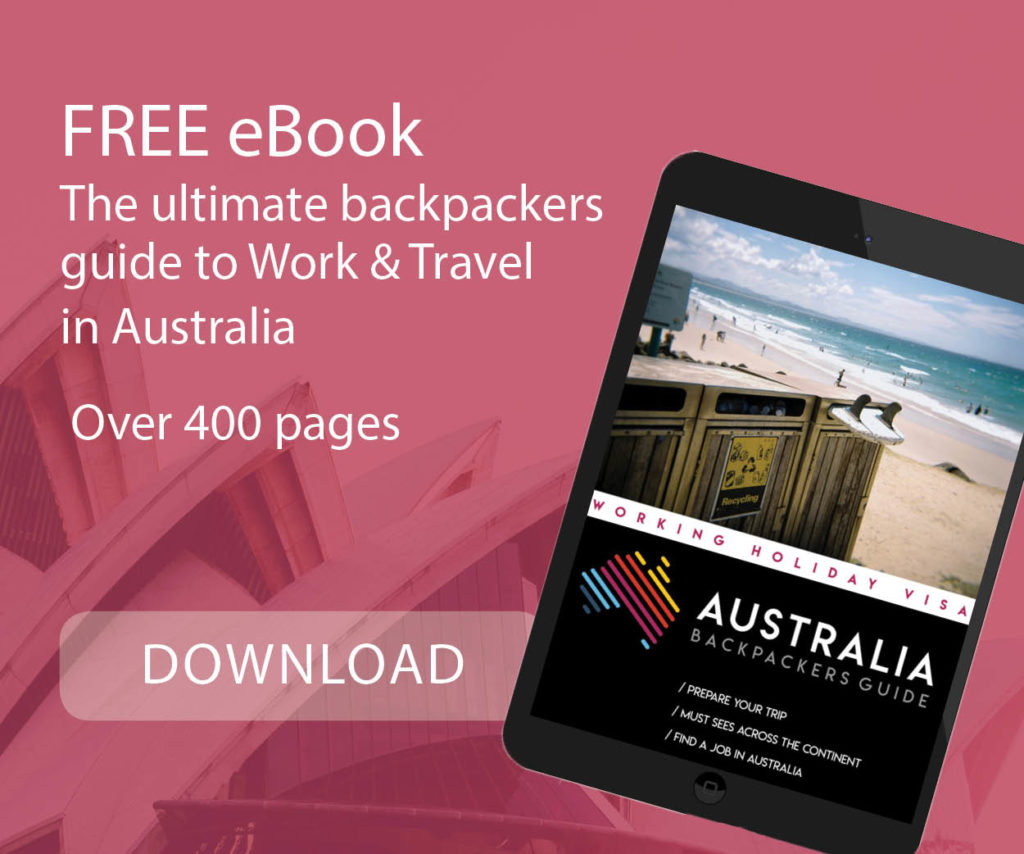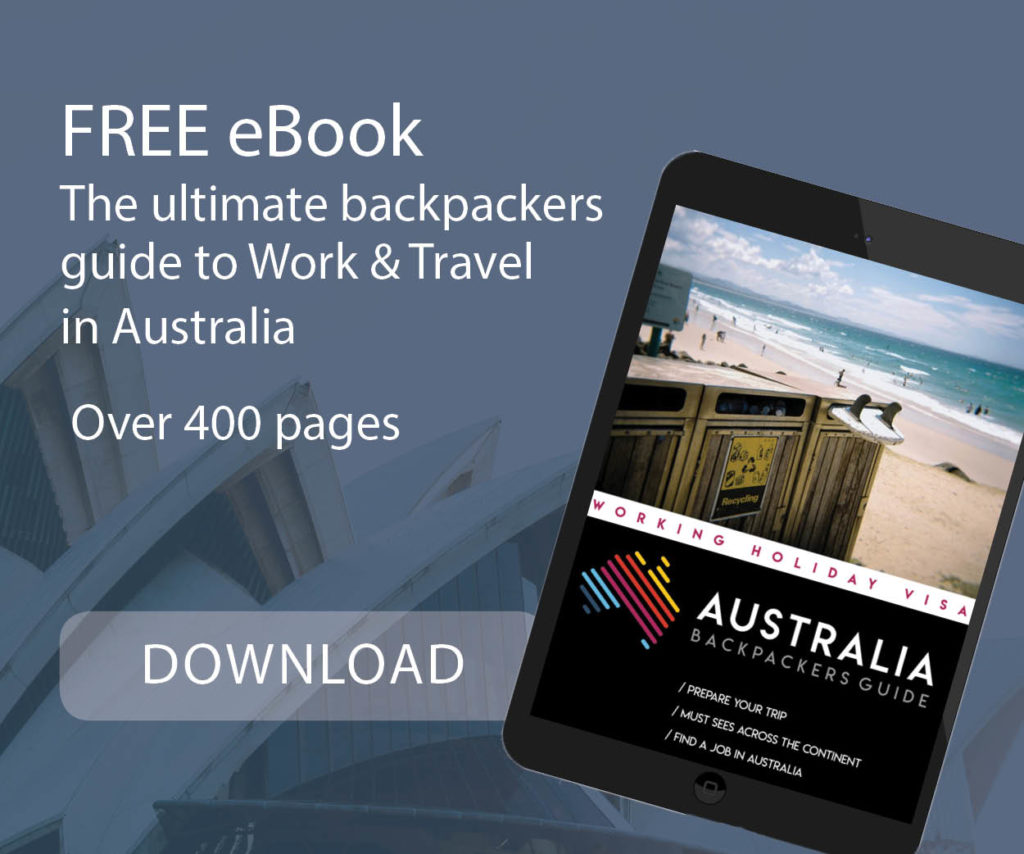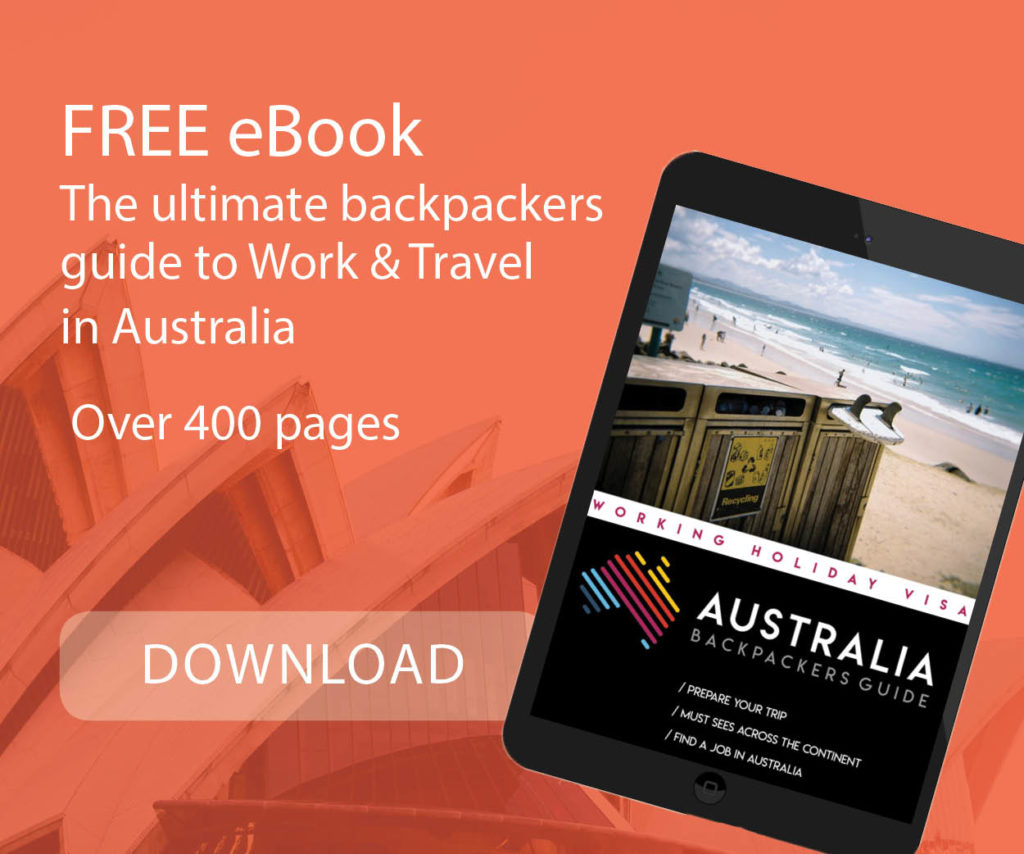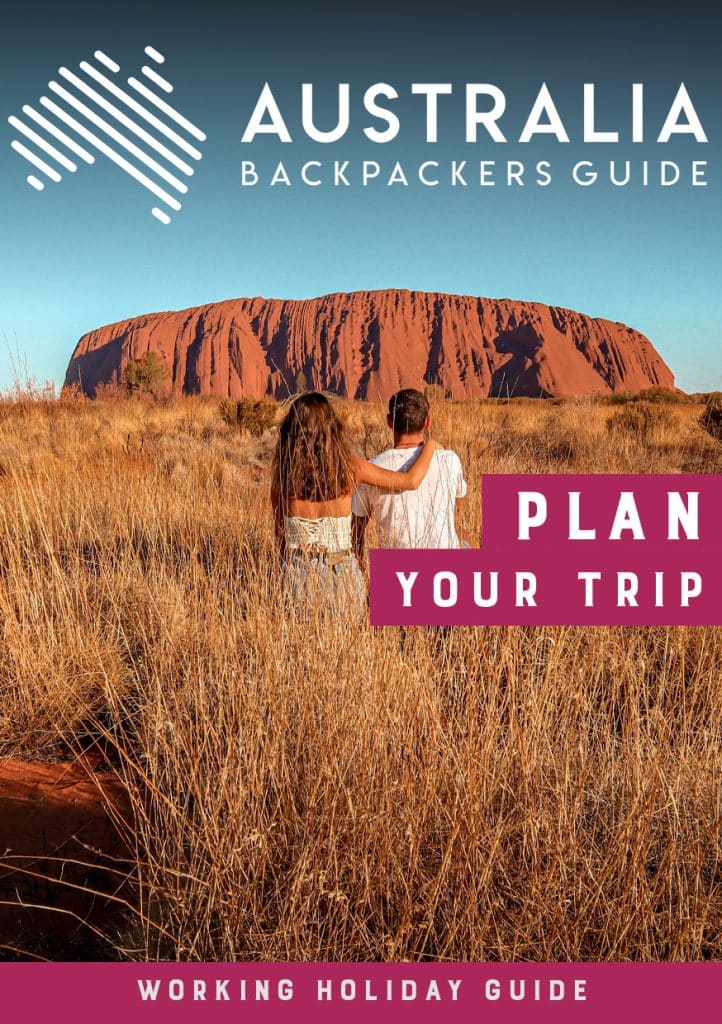Just landed in Australia? Congrats! Whether you’re here for a Working Holiday Visa, a student exchange, or just to explore, here’s a simple step-by-step checklist of what to do in your first few days to get settled quickly and start your adventure stress-free.
Table of Contents
Entry Requirements for Australia in 2025
A valid visa
To enter Australia, you must hold a valid visa:
- Tourist visa: For stays up to 3 months without working
- Student visa: If you plan to study in Australia
- Working Holiday Visa (WHV): Ideal for backpackers who want to work and travel
Visa applications can be made online, only on the Australian immigration website.
Your visa will be electronic and linked to your passport, and will be checked by Australian immigration when you arrive in the country.
A valid passport
You need a passport valid for at least 6 months beyond your return date.
✈️ Renew it early if needed — delays can be long.
Australia Arrival Process & Customs
When you arrive at the airport, you’ll go through the following steps:
Passport control:
- Present your passport to Border Force
- If you have a biometric passport, you can use the SmartGate (automated gates with facial recognition)
Incoming Passenger Card:
- You’ll fill this out on the plane (if English is not your first language you can find the card in other languages upon arrival).
- Declare any food, medication, animal products, or large sums of money
- Be honest — Australia has strict biosecurity laws
Customs & Biosecurity check:
- Officials may inspect your bags
- Declared items will be checked
- Undeclared goods can be confiscated and lead to fines.
Read also : Customs in Australia

Health Insurance
Some countries (Switzerland, Italy, the UK), have signed reciprocal health agreements with Australia. Their nationals can therefore partially benefit from the Australian health system. Beware, however, that the coverage offered is much less than that enjoyed by Australians themselves. Indeed, only essential care will be covered.
Given that medical care is very expensive, it is highly recommended to get health insurance for your trip to Australia. Whether you are going on vacation, studying, or on a Working Holiday Visa, make sure you are well covered.
💸 10% Discount on your Insurance Policy
Find here all the information you need and get your 10% Go walkabout promo code for any policy.
Vaccinations & Health Advice for Australia
Australia doesn’t present any major health risks, but it’s recommended to update your routine vaccinations before departure, such as diphtheria, tetanus, whooping cough, polio, measles, mumps, and rubella. Also, consider hepatitis vaccines, and certain vaccines like typhoid or rabies if you plan to stay in rural areas where food hygiene might be poor.
Import Restrictions: What You Can’t Bring
Australia enforces strict biosecurity laws to protect its environment and agriculture. It’s forbidden (or tightly regulated) to bring in:
- Fresh food and snacks
- Seeds, plants, soil, wood items
- Animal products
You must declare any of these items on your Incoming Passenger Card.
⚠️ Failure to declare can lead to fines or confiscation — when in doubt, always declare.
Driving licence
If you plan to drive in Australia (car, van, or camper), you’ll need:
- An international driving permit (IDP) OR
- A NAATI-certified English translation of your national licence (if it’s not in English)
🕐 IDPs can take time to obtain, so apply early.
🪪 Official NAATI Translation of Your National Driver’s Licence
Getting an accredited translation is the fastest and most reliable way to drive legally in every Australian state. Our NAATI‑certified translators will translate your French, Belgian, Swiss, German, Deutsch, Italien, Spanish, Czech, Russian licence within 24 to 48 hours!
Getting to your accommodation from the airport
Depending on your city of arrival, you can choose to take a train (underground), a bus, or a taxi/Uber. Some hostels and hotels offer a free shuttle bus from the airport, so make sure you check this before your arrival!
Sydney Airport is located just 13 minutes by train from the city. The Airport Link shuttle offers a quick way to reach the city, with trains running every 10 minutes, priced at around $20. A taxi will take about 20 minutes and will cost you around $60 (around $40 if you get an Uber). To reach the city via public transport, you will need to take two buses (about $10 total) and it will be about a 90-minute trip.
In Melbourne, the SkyBus is an express shuttle service that connects the airport to Southern Cross bus station in the city centre. Buses run every 10-15 minutes and the trip takes around 30 minutes (around $25). The bus will cost you around $15 but takes 50 minutes. Finally, a taxi or Uber will take you to the city centre in 20-30 minutes. Budget about $50 for a taxi and $40 for an Uber.
Get a phone plan and Internet access
Collect Your SIM Card
The easiest thing to do when you arrive is to buy a prepaid Sim card (usually $2). You can then recharge it whenever you want. You will even find some for sale at the airport. As for mobile networks, this will depend on your travel plans. If you’re staying in cities, go for the cheapest. On the other hand, if you’re going on a road trip, choose Telstra, which offers the best national coverage.
Access the Internet
It’s always a good idea to make sure data is included in your phone plan, but if you don’t have data, WiFi is quite widespread in Australia. You will usually find free Internet access:
- In large cities, most with accessible Wi-Fi in public spaces
- In some cafes and restaurants (McDonald’s, Starbucks etc)
- Public Libraries
- At malls and shopping centres
- At youth hostels or where you are staying (campsite, hotel, motel).
Getting Around in Australia – Buy a Transport Card
Australia is a big country, and transport costs can add up quickly — especially if you rely on taxis or Uber. If you’re not buying a car or van, the easiest and most affordable way to get around in cities is with a public transport card.
These cards give you access to buses, trains, trams, metros, ferries, and sometimes even bike services, with discounted fares and daily caps. Here are the main cards by city:
- In Sydney: the Opal card
- In Brisbane/Sunshine Coast/Gold Coast: the Go card
- In Melbourne: the Myki
- In Perth: the SmartRyder card
- In Adelaide: the Metrocard
🚐 5% Discount with Travellers Autobarn
Travellers Autobarn is offering a 5% discount to Australia Backpackers Guide readers with promo code GUIDEEN
Find Accommodation
Temporary accommodations
To give you a few days or a week to get your bearings, it’s a good idea to stay in a hostel (Backpackers Hostel) if you’re on a smaller budget. Prices can range from $50 to $80 for one night. It all depends on the location, the type of room and the time of year.
For accommodation in Sydney or Melbourne, expect to pay a minimum of $50 per night for a bed in a dormitory, and $90 for a private room (if you book in advance). In high season, these rates can increase by 50% to 70%!
Although there are loads of hostels in the major Australian cities, it’s recommended to make a reservation before your arrival. You will generally get better rates if you stay longer than one week.
Compare hostels
To find the hostel that best meets your needs, use Booking.com. It’s very thorough and the reviews are always honest!
For short stays, other options include hotels and Airbnbs. Rates would probably be higher. You can also do some coachsurfing, i.e. stay for free with local people.
Flat/house shares
Shared accommodation is a great option if you plan to stay longer than a few weeks in one place in Australia. If you’re on a budget but want to live centrally in a big city, sharing accommodation can allow you to save money while enjoying the benefits of a larger apartment or even a house.
It’s also a great way to meet new people and immerse yourself in the local culture.
It is easy to find flatmates on the internet by using forums, Facebook groups, specialised sites like Flatmates etc. You can also sometimes find ads for house shares on notice boards in shopping centres or on street lights in big cities.
For a room in the centre of Sydney, expect to pay around $400/week in shared accommodation.
Read also: Accommodation guide in Australia
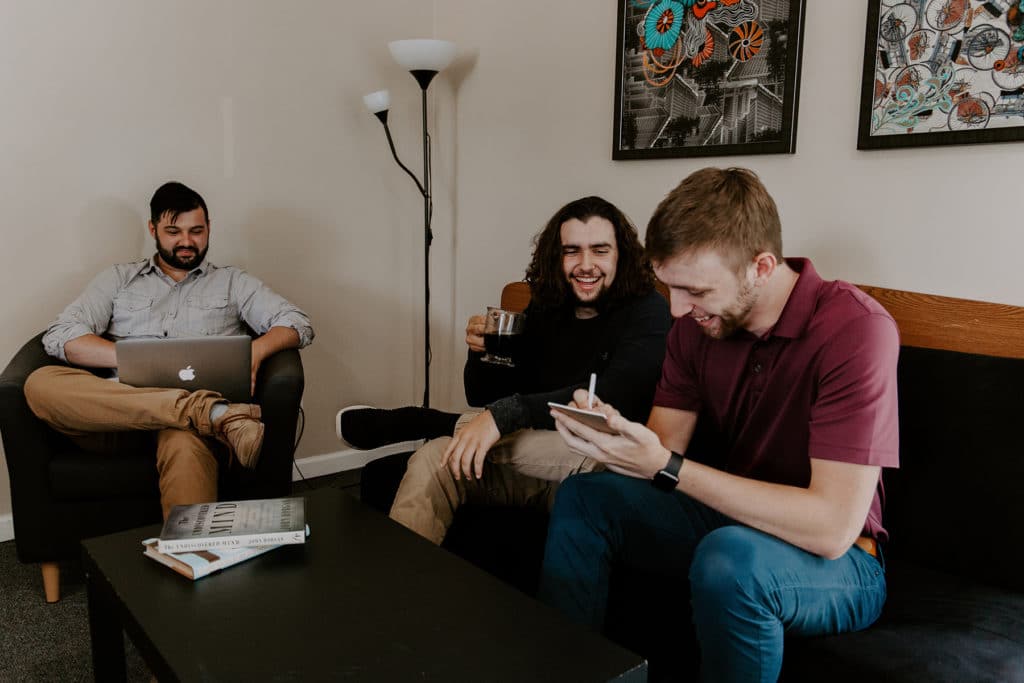
Open a Bank Account
Everyday account
To work in Australia, you’ll need a local bank account. You can open one online or at a branch with:
- Your passport
- Your visa grant letter
- An Australian address (hostel or temporary)
Popular banks: Commonwealth Bank, ANZ, NAB, Westpac.
You can start the process of opening your bank account online from your home country, but you will need to complete the process in person after you arrive in Australia. You will need to show your passport and provide a postal address (this can be your hostel or temporary accommodation until you find something more long-term).
More information: Open a bank account in Australia
Superannuation account
A Superannuation account is equivalent to a retirement savings account. You can choose the Superannuation account of your choice.
Your employer is obliged to pay superannuation contributions into this account (11,5% on top of your salary). If you don’t open it, your employer will do it for you.
You can set up a superannuation account with your bank when you open your bank account after you arrive in Australia. You can also choose a private company (Ausfund, AustralianSuper, CBUS, ClubPlus, SunSuper etc). If you open your superannuation account with your bank, you will have the advantage of being able to see how much money you have in it and watch it grow.
More information: Superannuation in Australia
Apply for a TFN (Tax File Number)
The Tax File Number (TFN) is essential if you plan to work in Australia. Apply online via the ATO website — it’s free and takes about 15 minutes. You will need to provide it your employer every time you get a new job. If you are self-employed, you will need both a TFN and an Australian Business Number (ABN).
You will also need your TFN when filing your tax return at the end of the year. To get it you must go to the ATO website.
More information: Get your TFN
Get Ready to Work
Write or update your Australian-style resume
Australian CVs are different to European and American ones, so you will probably have to change/update the one you currently have.
Australian resumes don’t include a photo or details specifying your age or family status. On the other hand, it is important to include references (with their names and contact details on your resume as opposed to “References on request”). Choose people who have a good standard of English and with whom you have a good relationship.
Get your certificates & tickets
Australia attaches a lot of importance to official certificates and training courses. To maximise your chances of getting hired, obtain any relevant certificates before you apply for a job:
- RSA (Responsible Service of Alcohol) for hospitality and catering
- the White Card for construction, mining jobs
- the RCG/RSG (Responsible Service of Gambling) for the gambling industry
- the WWC Check (Working With Children Check) to work with children (name differs depending on states)
- First aid and CPR
Most of these training courses and certificates cost money, but the investment can quickly pay for itself because you will have easier access to certain jobs. What’s more, you can deduct these expenses from your tax return.
👷 Get your White Card in Australia (with discounts)
Take advantage of special offers to obtain the white card and work in the construction industry.
Popular Employment Sectors for Working Holiday Visa Holders
WHV Makers in Australia can work in a variety of sectors, including:
Hospitality and Catering: The hospitality sector is one of the most popular fields for WHV travellers. Job opportunities include roles in restaurants, bars, cafes, hotels, and fast-food establishments. Common positions are server, barista, cook, dishwasher, etc. Tourism and Accommodation: roles in travel agencies, tourist attractions, national parks, leisure centres, cruises, and the hotel industry.
Agriculture and Seasonal Work: Australia offers numerous opportunities for seasonal work, especially in fruit and vegetable picking, viticulture, and livestock farming. Rural areas of Australia, like Queensland, are particularly known for these seasonal jobs.
Retail: Retail jobs, whether in department stores, local shops, supermarkets, or shopping malls, are also accessible to WHV holders. Common positions include salesperson, cashier, store assistant, etc.
Construction / Building / Mining: Common roles include construction workers, plasterers, electricians, plumbers, etc.
Healthcare and Care Services: For those with medical or healthcare qualifications, opportunities exist in the healthcare sector, including roles such as nurse, care assistant, or in retirement homes.
Manual and Craft Trades: Manual trades such as carpentry, mechanics, plumbing, and auto repair also offer employment opportunities for WHV youths.
As a WHV maker, you can work in any field, in any job during your visa. The 6-month limit with the same employer no longer applies to certain sectors (plant cultivation and animal husbandry, fishing and pearl farming, tourism and the hotel industry, etc).
Transfer Money to your Australian Bank Account
After opening your Australian bank account, you will probably want to transfer some of your savings to your new account. To do so, you have several options:
Option 1: A bank transfer via your national bank. The problem with this option is that the costs are quite high, so you will lose some precious dollars! Even if your bank says it doesn’t charge fees, they will usually offer a much more unfavourable exchange rate than the market rate.
Option 2: Receive money via Western Union. This option will allow you to withdraw cash from one of their relay points, but the costs are high.
Option 3 (recommended): Transfer your money through a company that specialises in international transfers. This will cost less than going through your own bank, and the exchange rates will also be better. Through our partnership with CurrencyFair, you will get 5 free transfers. After that, on average you pay just 0.45% of the amount exchanged plus a fixed transfer fee, regardless of the amount of money you want to transfer. It is cheaper and faster than going through your bank, and very safe!
Plan your Working Holiday in Australia 📖 Free eBook
Plan your trip in Australia with this free 60-page ebook written by former backpackers who have traveled the length and breadth of Australia.
Inside, you’ll discover everything you need to plan your journey. This ebook will guides you through the entire process, from applying for your visa to booking your flights and understanding the administrative procedures upon arrival.
With detailed insights and practical advice, you’ll navigate each step of your journey with ease. So, get ready to embark on your Australian adventure fully equipped and informed!
Updated on 11/06/2025





